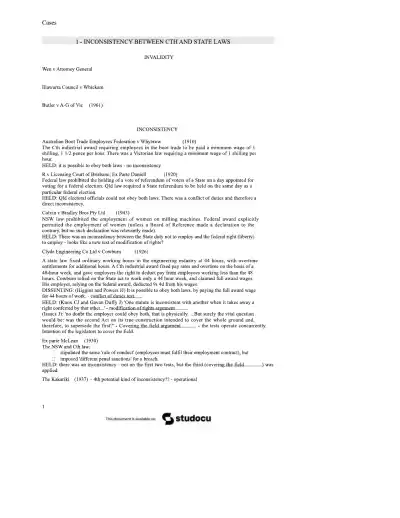Page 1

Loading page ...
Summary of key High Court cases on inconsistencies between Commonwealth and State laws under s109 of the Australian Constitution, including major tests like conflict of duties, modification of rights, and covering the field.

Loading page ...
This document has 12 pages. Sign in to access the full document!